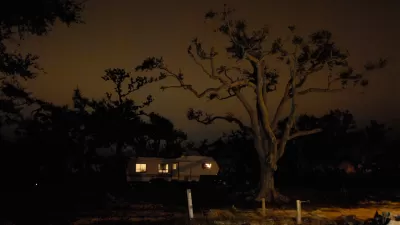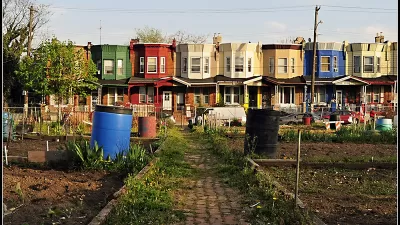As the Sandy clean-up gets underway, could this be an opportunity for the Eastern Seaboard to apply some of the rebuilding lessons learned along the Gulf Coast after Katrina? Ben Brown shares some pointers.
"If there's one upside in the succession of devastating weather events over the last decade, it's the opportunity to build on lessons learned. Time between disasters dulls response capacities; shorter gaps refine best practices. And for my money, no lessons are worth more than those connected with the evolution of sustainable neighborhood design."
As a leader in coastal resilience, Ben Brown applies lessons he's learned as Communications Director for both the Mississippi Renewal Forum after Hurricane Katrina and of the 90-day charrette for the Coastal Recovery Commission of Alabama after the BP Oil spill.
"First of all, this irony: The housing bust, the Great Recession and some major demographic shifts are likely to force a faster adaptation to reality in 2012 than in 2005. When Katrina hit, the housing and growth bubbles were expanding big time, and expectations - demands even - for a 'return to normal' imagined a recovery that recaptured the delusions."
Ben goes on to give inspiring examples of the people and places overcoming barriers to developing local cottage communities and pocket neighborhoods. As well as identifying the hurdles to remove.
"Since this important transition in neighborhood redevelopment will be driven, at least initially, by local government policy and state and federal funding that tend to default to low-bid processes and innovation-killing bureaucracy, the journey to that better place has a few barriers to overcome."
Thanks to Hazel Borys
FULL STORY: Finally Thinkin’ Small: But can we build on what we’ve learned?

Study: Maui’s Plan to Convert Vacation Rentals to Long-Term Housing Could Cause Nearly $1 Billion Economic Loss
The plan would reduce visitor accommodation by 25,% resulting in 1,900 jobs lost.

North Texas Transit Leaders Tout Benefits of TOD for Growing Region
At a summit focused on transit-oriented development, policymakers discussed how North Texas’ expanded light rail system can serve as a tool for economic growth.

Using Old Oil and Gas Wells for Green Energy Storage
Penn State researchers have found that repurposing abandoned oil and gas wells for geothermal-assisted compressed-air energy storage can boost efficiency, reduce environmental risks, and support clean energy and job transitions.

Texas State Bills Could Kill Transit Funding in Dallas, Austin
State lawmakers could pull funding from the state’s largest transit agency and the ambitious Project Connect, a voter-approved transit project in Austin.

Opinion: DC Encampment Sweeps Hide, but Don’t Solve, Homelessness
President Trump recently ordered the clearing of encampments built by unhoused people on federal land in Washington, D.C.

Santa Barbara Could Build Housing on County Land
County supervisors moved forward a proposal to build workforce housing on two county-owned parcels.
Urban Design for Planners 1: Software Tools
This six-course series explores essential urban design concepts using open source software and equips planners with the tools they need to participate fully in the urban design process.
Planning for Universal Design
Learn the tools for implementing Universal Design in planning regulations.
Ascent Environmental
Borough of Carlisle
Institute for Housing and Urban Development Studies (IHS)
City of Grandview
Harvard GSD Executive Education
Toledo-Lucas County Plan Commissions
Salt Lake City
NYU Wagner Graduate School of Public Service




























